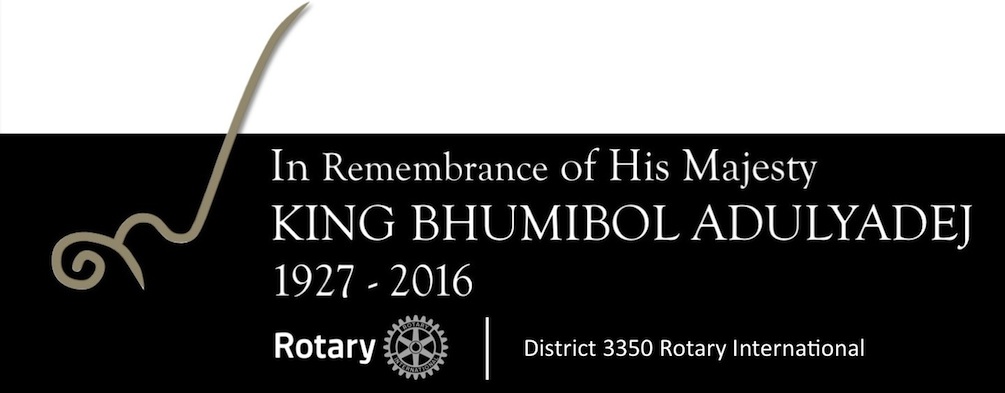ส่วนผสม ๖ อย่างในสูตรสร้างเสริมสมาชิกภาพ
ส่วนผสม ๖ อย่างในสูตรสร้างเสริมสมาชิกภาพ
โดย เควนทิน วอดดัน สมาชิกสโมสรโรตารีแคปปิตอลฮิลล์ วอชิงตัน ดีซี สหรัฐอเมริกา
เผยแพร่วันที่ ๔ พฤศจิกายน ๒๕๕๙
ต้องยอมรับก่อนว่าสโมสรยิ่งเล็
ทำได้ไง ขอให้ผมแบ่งปันสูตรลับนี้
ส่วนผสมที่ ๑ ประชุมน้อยลง บำเพ็ญประโยชน์และร่วมกิจกรรมสั
ส่วนผสมที่ ๒ โอกาสในการบำเพ็ญประโยชน์ที่ดี
ส่วนผสมที่ ๓ ใช้จ่ายเงินน้อยลง สำหรั
ส่วนผสมที่ ๔ ภาพลักษณ์โรตารีที่เข้มแข็งยิ่
ส่วนผสมที่ ๕ แผนยุทธศาสตร์ ในที่สุดเราก็มีแผนยุทธศาสตร์
ส่วนผสมที่ ๖ โชคช่วย การที่สมาชิกเพิ่มขึ้นสำหรั
คงต้องติดตามกันต่อไปว่าช่
---------------
เกี่ยวกับผู้เขียน เควน วอดดันเป็นนักเศรษฐศาสตร์แนวหน้
6 ingredients for membership growth

One public event the club organized included a booth at a neighborhood festival.
By Quentin Wodon, a member of the Rotary Club of Capitol Hill, Washington, D.C., USA
Let’s admit it: achieving a high growth rate (negative or positive) is easier with a small club. Still, after more than five years of almost continuous decline in membership, my club was excited to report a 60 percent growth in membership from July to October. We had 18 members on 1 July. Now we have 29, with 11 new members inducted in the first trimester of the new Rotary year.
How did we do it? Let me share our recipe:
Ingredient 1: Less meetings, more service and public events. Rotary’s Council on Legislation has given a lot of freedom to clubs on how they organize their meetings. So we decided to reduce our regular meetings from four to two per month, which gives us more time for service work and organizing public events.
Ingredient 2: Better service opportunities. Many Rotarians are professionals and business leaders, yet most do not use their skills when they volunteer with their club. We changed that in our club by creating teams of Rotarians and non-Rotarians combining their skills to provide free advice to local nonprofits on the strategic issues they face. This is not only more interesting in terms of volunteer work, but it is also more impactful to create positive change in the community.
Ingredient 3: Lower cost. By the standards of Washington D.C., our membership dues are not very high, at $600 per year. But this is too much for many. So we created two new membership types – a membership at half the regular dues for young professionals under 35 years of age, and a spouse/partner membership at one third of the dues.
Ingredient 4: Stronger public image. We are organizing better and more regular public events. One of our recent events was a seminar at the World Bank with great speakers on education for peace and social change. That same week we also had a stand at the main festival in our neighborhood. In addition, we have been writing articles for a local blog, the local magazine for our neighborhood in Washington, D.C., and a free newspaper.
Ingredient 5: Strategic planning. We now have a strategic plan, our first since the club’s creation in 2003. The plan gives us a vision, and clear milestones and targets that we are trying to achieve.
Ingredient 6: Luck. Part of our gain in membership was just luck, as two new members transferred from other clubs due to changes in jobs and the location of their workplace. What’s great is that they bring with them a lot of experience in Rotary.
It remains to be seen whether we will continue on the path of membership growth for the rest of the year. We expect some members to relocate, so we will need to recruit more members to compensate. But we are making progress, and we have exciting initiatives coming up that should help us become better known in the community, make a larger difference for the less fortunate, and hopefully continue to grow.
 About the author: Quentin Wodon is a lead economist at the World Bank. He holds PhDs in economics and in theology and religious studies, and has taught at universities in Europe and the U.S. He is currently President of the Rotary Club of Capitol Hill, in Washington, D.C. He is also author of the Rotarian Economist blog at www.rotarianeconomist.com.
About the author: Quentin Wodon is a lead economist at the World Bank. He holds PhDs in economics and in theology and religious studies, and has taught at universities in Europe and the U.S. He is currently President of the Rotary Club of Capitol Hill, in Washington, D.C. He is also author of the Rotarian Economist blog at www.rotarianeconomist.com.
